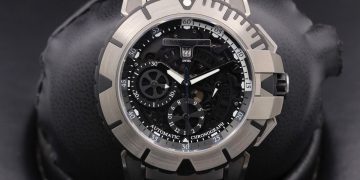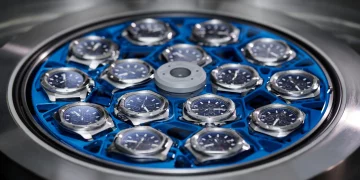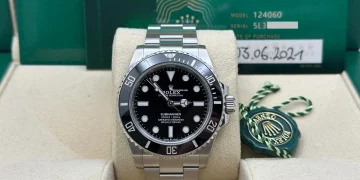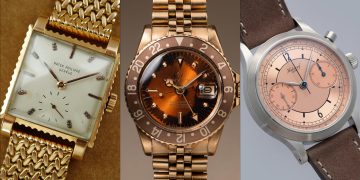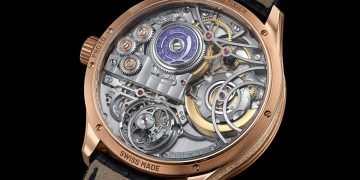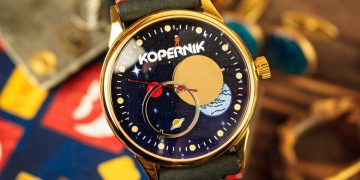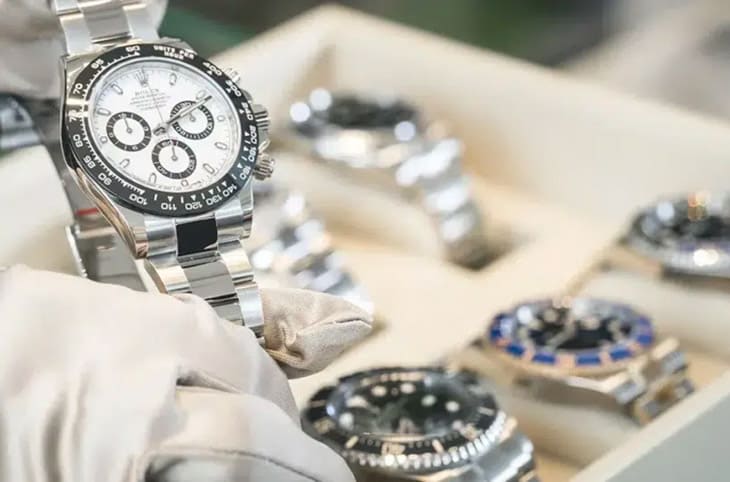Introduction
The watch industry is one of the few sectors that combines traditional craftsmanship with modern innovation, creating a fascinating intersection of history, art, and engineering. In this dynamic and competitive landscape, many brands have built legacies that transcend generations, preserving their distinct identity and heritage. For these brands, the balance between embracing modern trends and staying true to their roots is essential for continued success.
In this article, we will explore how brand heritage plays a pivotal role in helping traditional watchmakers remain competitive in the ever-evolving modern market. We will discuss the importance of legacy, the interplay between tradition and innovation, and how watch brands adapt to meet the demands of a new generation of consumers while maintaining their core values.
1. The Role of Brand Heritage in the Modern Watch Market
1.1 What is Brand Heritage?
- Definition of Brand Heritage: Brand heritage refers to the history, legacy, craftsmanship, and traditions that a brand has cultivated over time. In the context of luxury watchmaking, this can include a rich history of innovation, iconic timepieces, and an established reputation for quality and precision.
- Examples of Heritage Brands: Discuss well-known heritage brands such as Rolex, Patek Philippe, Audemars Piguet, and Omega. These companies are known for their long-standing presence in the market, with their heritage defining their identity and shaping the modern luxury watch industry.
1.2 Importance of Heritage in the Luxury Watch Industry
- Consumer Trust and Recognition: Consumers often gravitate toward brands with a strong heritage because it signals trust, reliability, and high quality. Heritage is a symbol of time-honored craftsmanship and expert design, which is crucial in the luxury watch market where exclusivity and quality matter the most.
- Craftsmanship and Innovation: While heritage brands may lean on their traditional roots, their ability to innovate and merge new technology with old-world craftsmanship is essential. Balancing these two factors is crucial for staying relevant in the modern market.
2. The Challenge of Modernization and Innovation
2.1 The Modern Watch Market and Evolving Trends
- Technological Advances: Discuss the rise of smartwatches and hybrid timepieces, which have shifted consumer preferences and forced traditional watch brands to adapt. Innovations in smartwatch technology, digital features, and convenience are an ongoing challenge for legacy brands to address without sacrificing their heritage.
- Changing Consumer Preferences: Today’s watch consumers are more educated, diverse, and demand greater customization. The rise of online retail, social media, and direct-to-consumer models has also influenced purchasing behavior, forcing brands to rethink their strategies.
2.2 Challenges for Heritage Brands
- Staying True to Tradition: How can heritage brands stay true to their original values and designs while staying competitive in a market that increasingly prioritizes technology and customization?
- Appealing to Younger Audiences: How do traditional brands attract younger generations who are often more interested in digital technologies than analog timepieces? Brands that fail to resonate with these consumers risk losing relevance in the modern market.
3. How Heritage Brands Are Innovating
3.1 Incorporating Technology into Traditional Craftsmanship
- Smartwatch Integration: Explore how brands like TAG Heuer, Montblanc, and Breitling have embraced smartwatch technology without abandoning their traditional mechanical roots. These companies offer hybrid models that blend classic watch design with modern digital functionalities.
- Manufacturing and Material Innovation: Discuss how heritage brands continue to innovate with materials such as ceramic, carbon fiber, and titanium. The use of these advanced materials not only improves the performance and durability of watches but also reflects the brand’s commitment to innovation.
3.2 Collaboration and Limited Editions
- Strategic Partnerships: Many heritage brands collaborate with other industries, artists, and influencers to create limited-edition pieces or collections that cater to a wider audience. These collaborations allow traditional brands to appeal to a younger and more diverse market while still maintaining exclusivity.
- Limited Editions: Limited-run releases are a strategy used by heritage brands to maintain exclusivity and build demand. These pieces often tell a story rooted in the brand’s history or involve an element of innovation that reflects current market trends.
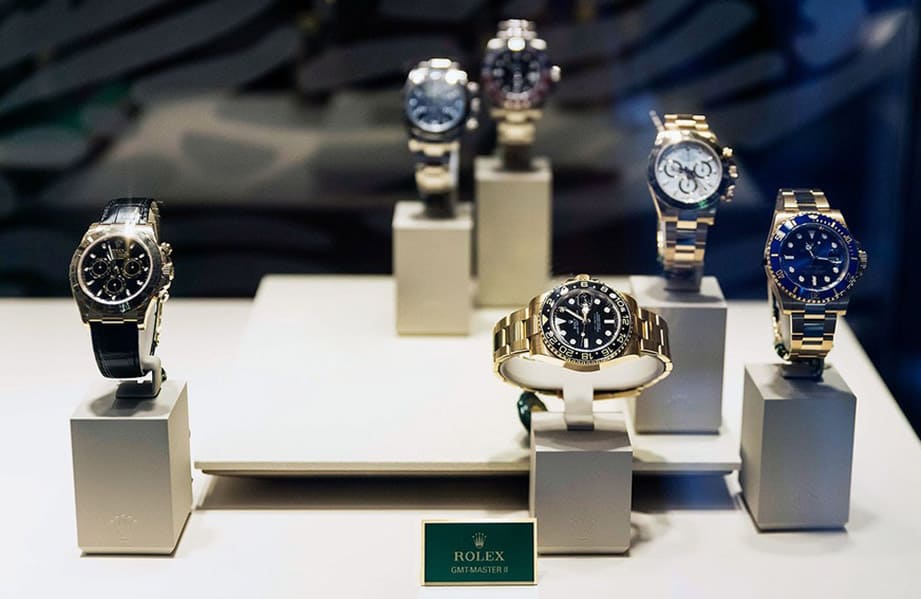
4. Marketing Brand Heritage in the Modern Era
4.1 The Power of Storytelling
- Brand Narratives: Heritage brands often have compelling stories behind their creations, whether it’s about the founder’s vision, groundbreaking innovations, or milestones in history. These narratives resonate with consumers who value authenticity and craftsmanship.
- Digital Presence: Discuss how traditional watchmakers have adapted to the digital age by utilizing social media, digital campaigns, and influencer marketing. By blending storytelling with modern marketing techniques, heritage brands can effectively engage with younger consumers without losing sight of their legacy.
4.2 Maintaining Exclusivity
- The Role of Limited Availability: Heritage brands often emphasize the scarcity and exclusivity of their watches as a selling point. The tradition of limited production and careful distribution helps maintain the brand’s luxury appeal.
- Personalization and Customization: Even in the age of mass production, heritage brands are embracing bespoke services where consumers can personalize their watches. This allows brands to offer something exclusive without sacrificing their heritage.
5. Case Studies of Successful Heritage Brands
5.1 Rolex: A Benchmark of Excellence
- Iconic Timepieces and Longevity: Rolex is a perfect example of a brand that has successfully maintained its heritage while continually evolving. From its early innovations like the Oyster case to its modern advancements in movement technology, Rolex has built a reputation for quality, durability, and exclusivity.
- Rolex’s Strategy for Growth: Discuss Rolex’s careful brand positioning, marketing strategies, and focus on maintaining traditional values while adapting to market changes.
5.2 Patek Philippe: Mastering the Art of Watchmaking
- Innovation Through Tradition: Patek Philippe is renowned for its focus on craftsmanship and artistry. The brand has embraced innovation while staying true to its core values, ensuring that each watch is a masterpiece of traditional watchmaking.
- Embracing Modern Trends While Keeping Heritage Intact: Patek Philippe has remained exclusive and relevant by focusing on the rarity of its watches, limited production, and strategic marketing, emphasizing the brand’s commitment to quality craftsmanship.
5.3 Omega: Adapting to Modern Demands Without Losing Identity
- Adapting to Technology: Omega has been able to blend its rich history with modern demands through collaborations like its connection to NASA and the Speedmaster’s legacy in space exploration. Additionally, Omega has successfully incorporated modern materials and innovations into its timepieces.
- Sustainability Initiatives: Omega’s focus on sustainability, such as using recycled materials in certain collections, reflects the brand’s effort to remain relevant in the modern, environmentally conscious consumer market.
6. The Future of Brand Heritage in the Watch Industry
6.1 The Continued Importance of Craftsmanship and Innovation
- Balancing Heritage with Future Growth: As the watch industry continues to evolve, heritage brands will need to balance their traditional craftsmanship with new technologies, sustainability, and consumer demand for more versatile and functional timepieces.
6.2 Preserving Exclusivity in the Age of Digital Connectivity
- Maintaining Luxury Appeal in a Digital World: Discuss how brand heritage must evolve in the face of global connectivity, where information, pricing, and reviews are widely available online. How can brands maintain their allure of exclusivity and scarcity in an increasingly transparent and connected market?
7. Conclusion
Brand heritage plays an invaluable role in the continued success of luxury watch brands, ensuring that the core principles of craftsmanship, exclusivity, and precision are preserved in a rapidly changing market. By embracing modern trends, integrating new technologies, and engaging with younger, more diverse audiences, these heritage brands can remain relevant while safeguarding the elements that have made them iconic. The balance between tradition and innovation is crucial, and it is this very balance that enables these brands to remain competitive in the modern luxury watch market.



